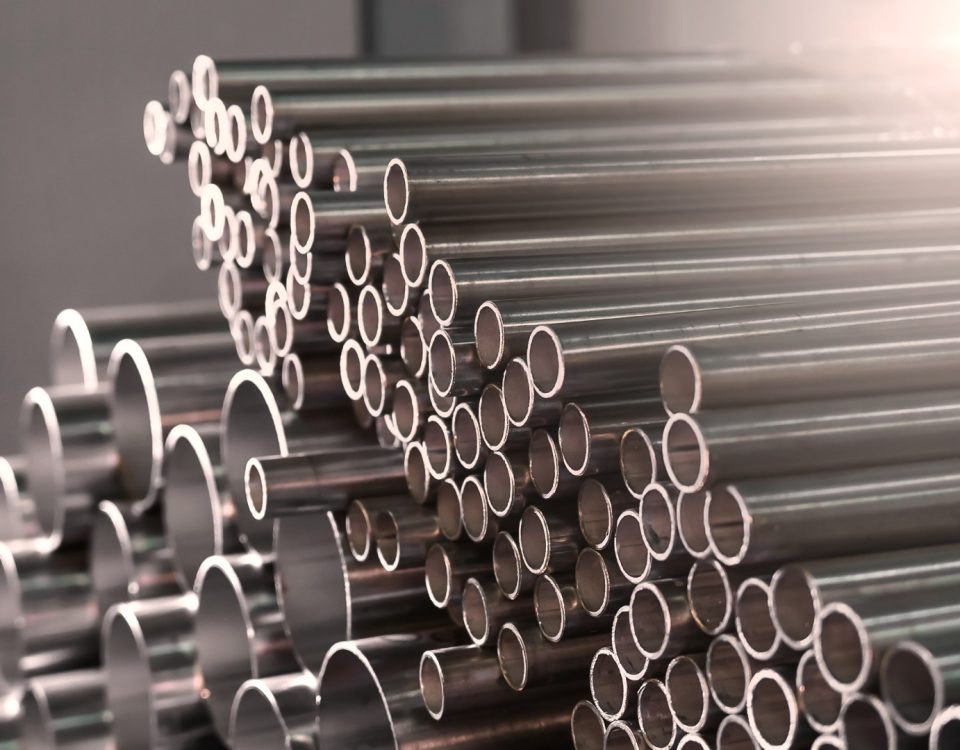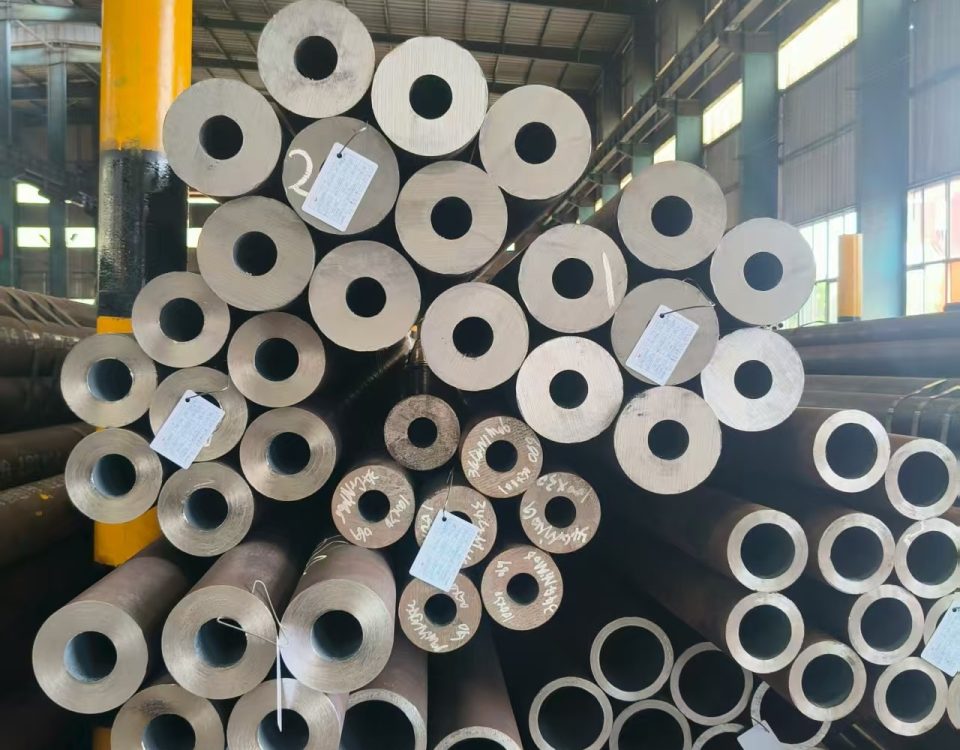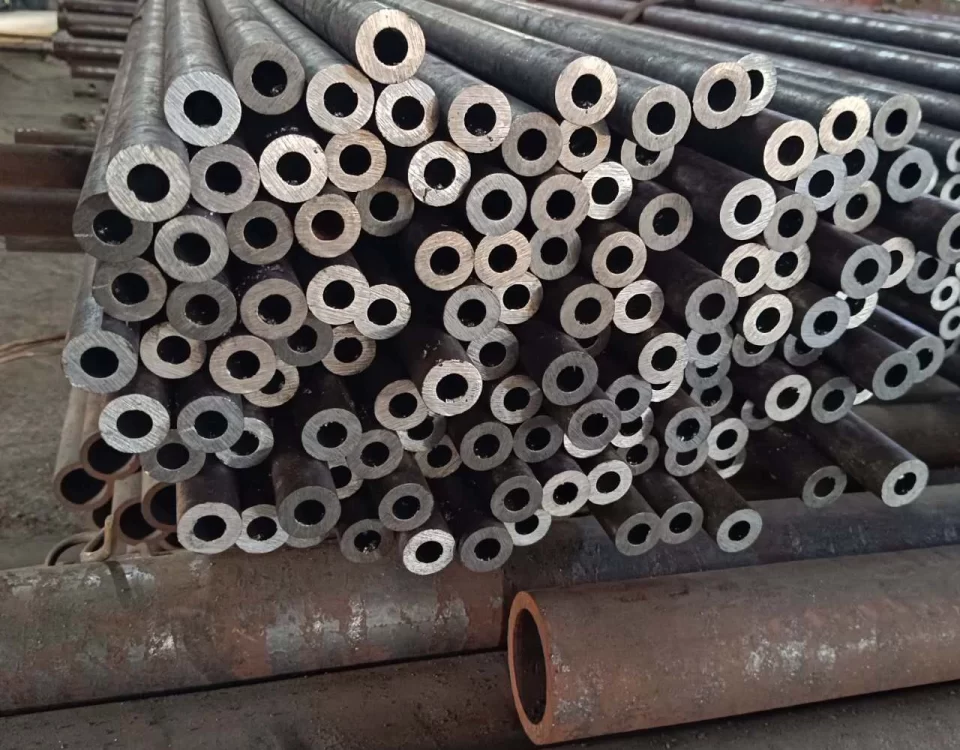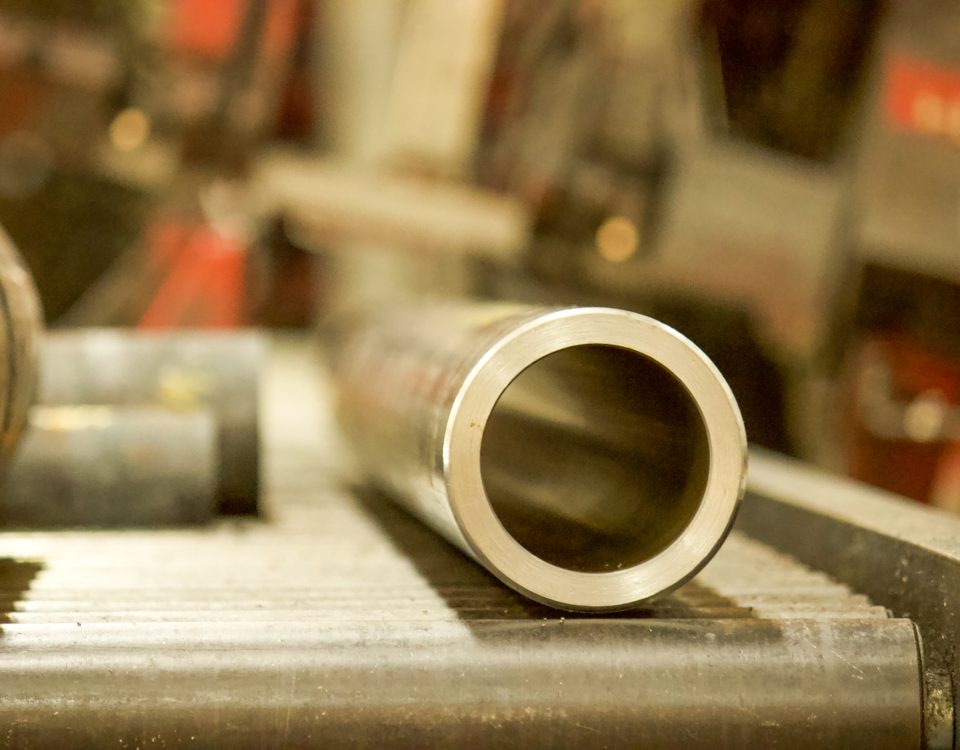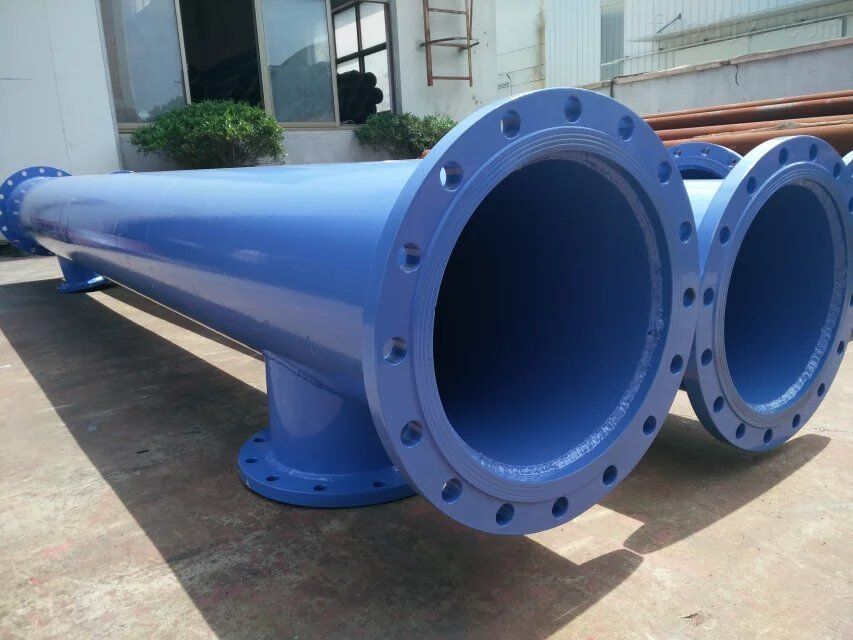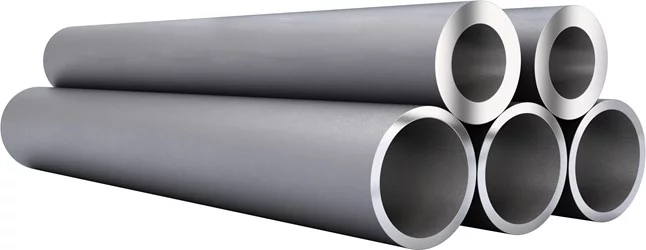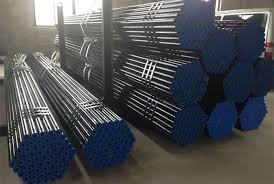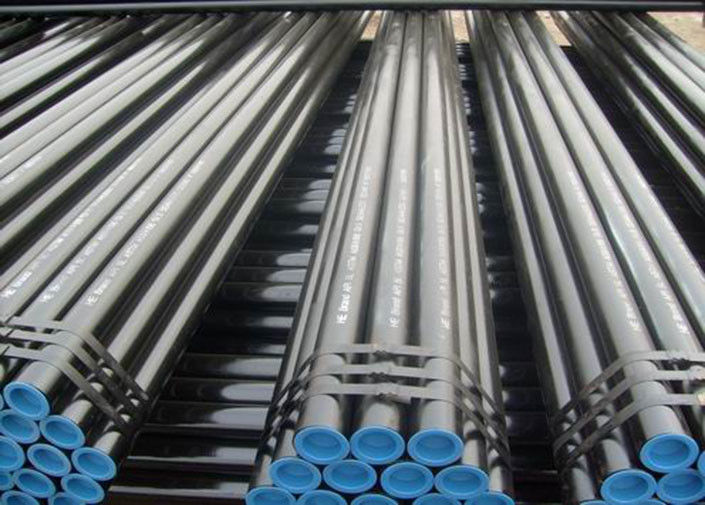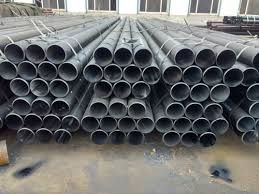
EN 10305 (E215, E235, E335) Welded Steel Cold Drawn Precision Pipe
November 16, 2025The history of modern engineering is intrinsically linked to the pursuit of dimensional accuracy. As machines evolved from bulky, low-tolerance assemblies to sleek, high-speed automated systems, the demand for components with guaranteed geometric uniformity became paramount. Within the realm of steel components, this need for precision led to the development of standards like the German DIN 2394, specifically governing Welded Precision Steel Tubes.
DIN 2394 is not merely a material specification; it represents a manufacturing philosophy. It dictates a stringent process—the combination of high-frequency electric resistance welding (HFERW) and subsequent rigorous cold drawing—that transforms common steel strip into a highly accurate tubular component. While this standard has, in recent decades, been largely harmonized and superseded by its European counterpart, EN 10305-2, the principles and the grades associated with DIN 2394—particularly St35.8, St37.2, and St52—remain fundamental to manufacturers and engineers globally, representing specific, reliable benchmarks for strength and formability.
This article offers an in-depth exploration of the DIN 2394 standard, delving into the metallurgy of its primary grades, the transformative role of cold drawing and heat treatment, the exacting dimensional tolerances that define its ‘precision’ moniker, and its indispensable role across diverse industrial applications, from high-performance automotive parts to sophisticated hydraulic circuits. It is an examination of how a meticulous manufacturing process yields a product whose value is measured not just in mass, but in millimeter accuracy.
1. The Genesis of Precision: Defining DIN 2394 and its Manufacturing Route
DIN 2394, officially titled “Welded Precision Steel Tubes,” sets the benchmark for tubes intended for mechanical, structural, and general engineering purposes where the dimensional tolerances must be significantly tighter than those offered by standard commercial tubes. The standard is characterized by the mandatory use of the cold drawing process to achieve its geometric excellence.
The Synergy of Welding and Cold Drawing
The journey of a DIN 2394 tube begins as a flat steel strip, or coil. This strip is first slit to a precise width corresponding to the circumference of the desired tube. This initial step is critical, as it inherently dictates a high degree of wall thickness uniformity (low eccentricity), a primary advantage over tubes formed from seamless methods (which begin as solid billets).
The strip is then continuously formed into an open-seam tube and subjected to High-Frequency Electric Resistance Welding (HFERW). This welding technique provides rapid, clean, and strong fusion of the abutting edges. An internal flash, or excess material, is often created and subsequently removed by a process called scarfing, leaving a smooth internal weld seam.
However, the tube at this stage is merely a good-quality welded tube, not a precision tube. It is the subsequent Cold Drawing operation that defines the DIN 2394 product. The tube is lubricated and mechanically drawn through a hardened die and over a mandrel (or plug). This action:
- Reduces the cross-section: The tube’s outer diameter (OD) and wall thickness (WT) are permanently reduced, simultaneously lengthening the tube.
- Imparts Precision: The dimensional limits (OD, ID, and WT) are held to exceptionally tight tolerances, defined by the tooling.
- Enhances Surface: The drawing action refines and smooths the internal and external surfaces.
- Work Hardens: The severe plastic deformation significantly increases the material’s strength (yield and tensile), leading to a state of high residual stress.
The entire DIN 2394 standard is built around this sequential process, where the initial uniformity of the weld is tested and integrated into the body of the steel by the cold deformation, and the final precision geometry is achieved.
2. The Metallurgical Backbone: Grades St35.8, St37.2, and St52
The steel grades within DIN 2394 are non-alloy quality steels selected specifically for their excellent cold workability, weldability, and mechanical strength characteristics. The grades reflect a strategic trade-off between ductility and maximum load-bearing capability.
St37.2: The General-Purpose Workhorse
St37.2 is the most commonly specified grade within the DIN 2394 standard. The ‘St’ prefix denotes Stahl (steel), and ’37’ historically relates to its approximate minimum tensile strength in $\text{kgf/mm}^2$ (or $370 \text{ N/mm}^2$). This grade is characterized by a relatively low carbon content, which ensures superb weldability and excellent cold formability, especially when delivered in a heat-treated condition.
- Purpose: Ideal for general structural and mechanical applications requiring moderate strength combined with the ability to undergo further processing such as bending, flaring, or swaging after final delivery. It offers a balanced compromise necessary for mass-produced components.
- Harmonization: St37.2 aligns closely with the modern European grade E235.
St52: The High-Strength Contender
St52 is the high-strength option, designed for applications where weight-saving is critical, or high static and dynamic loads must be borne by a smaller cross-section. The increased strength is achieved primarily through a calculated increase in Manganese (Mn) and, often, a slight increase in Carbon (C), though the overall composition is still tightly controlled to maintain good weldability.
- Purpose: Used for high-pressure lines, heavy-duty structural frames, high-load components in construction machinery, and specialized automotive applications where a high minimum yield strength is essential. The increased strength means its formability is inherently lower than St37.2, requiring careful consideration of the delivery condition.
- Harmonization: St52 aligns closely with the modern European grade E355.
St35.8: The Former Pressure Specialist
The St35.8 designation, while sometimes found in DIN 2394 documentation, historically relates more closely to the DIN 17172 standard for pressure vessel tubing. Within the precision tube context, St35.8 essentially denotes a very low-carbon, high-purity variant of St37.2.
- Purpose: Maximum ductility and excellent weldability. When high formability is the paramount requirement, St35.8 or the lowest-strength state of St37.2 is often preferred. Its low carbon equivalent makes it suitable for complex forming operations without risk of hardening or cracking.
The strict control over tramp elements like Phosphorus (P) and Sulfur (S) is common across all DIN precision grades ($\leq 0.025\%$ or lower), which guarantees material cleanliness, essential for maintaining the integrity of the weld seam and preventing brittle fracture during cold working.
| Material Grade (DIN 2394) | Equivalent EN Grade | C (max %) | Si (max %) | Mn (max %) | P (max %) | S (max %) |
| St35.8 | E215 / P235 | 0.17 | 0.35 | 0.60 | 0.025 | 0.025 |
| St37.2 | E235 | 0.17 | 0.35 | 1.20 | 0.025 | 0.025 |
| St52 | E355 | 0.22 | 0.55 | 1.60 | 0.025 | 0.025 |
3. The Transformation of Properties: Heat Treatment and Delivery Conditions
In the context of precision steel tubes, the final mechanical properties are not solely a function of the chemical composition (St37.2 or St52) but, perhaps more critically, the Delivery Condition. As cold drawing severely hardens and stresses the material, a post-drawing heat treatment is necessary to tailor the tube’s characteristics—specifically, to trade-off some strength for increased ductility or dimensional stability.
DIN 2394, like EN 10305, specifies five primary delivery conditions, each fundamentally altering the tube’s microstructure, residual stress state, and overall performance envelope:
The Five Pillars of Delivery
- +C (Cold Drawn/Hard):
- Process: The tube is delivered as-drawn, without any subsequent heat treatment.
- Effect: Maximum work hardening is retained. The tube exhibits the highest possible Yield Strength ($R_{eH}$) and Tensile Strength ($R_m$) for the grade, but suffers from the lowest ductility and highest levels of internal residual stress.
- Application: Ideal for applications demanding maximum stiffness and strength, typically for static structural components that will not undergo further bending or forming, or where the material’s natural springiness is desired.
- +LC (Cold Drawn/Soft):
- Process: Cold drawn, followed by a light controlled annealing at a lower temperature.
- Effect: A partial recovery of ductility is achieved, reducing internal stress moderately without sacrificing a prohibitive amount of the strength gained from cold working. It balances strength and formability.
- Application: Used for parts requiring simple bending or low-severity cold forming after delivery, where the strength of the +C condition is not strictly necessary, but better workability is required.
- +SR (Stress Relieved):
- Process: Cold drawn, followed by a specific stress-relieving anneal (typically below $600^{\circ}\text{C}$).
- Effect: The temperature is high enough to significantly relieve the internal residual stresses introduced during drawing, but not so high as to fully reverse the work hardening effect. High strength is largely preserved, but dimensional stability is vastly improved.
- Application: Critical for precision shafts, components that will undergo light machining, or parts requiring high stability under thermal cycling or vibration. Reducing internal stress minimizes the risk of warping after cutting or machining operations.
- +A (Annealed):
- Process: Cold drawn, followed by full annealing (heated above the upper critical temperature and cooled very slowly).
- Effect: The work-hardened structure is completely recrystallized, yielding the softest possible state. This results in the lowest strength but the maximum possible ductility and formability, with virtually zero residual stress.
- Application: Used when the tube needs to be subjected to severe forming, such as complex coiling, flaring, deep bending, or hydroforming. The tube is essentially treated as raw material for further drastic shaping.
- +N (Normalized):
- Process: Cold drawn, followed by normalizing (heated above the upper critical temperature and cooled in still air).
- Effect: The normalizing heat treatment refines the grain structure, removing residual stress and homogenization, particularly in the weld area. The resulting properties (strength and ductility) are equivalent to the base steel’s guaranteed minimums.
- Application: Essential for high-integrity structural parts or pressure components where a uniform, predictable microstructure and high impact toughness are required, ensuring the weld and the heat-affected zone are fully integrated with the parent material.
The engineer’s choice of grade (St37.2 vs. St52) combined with the delivery condition is the master key to optimizing performance. For instance, an St52 tube in the +C condition represents the maximum strength envelope, while an St37.2 tube in the +A condition represents the maximum formability envelope—two radically different materials derived from the same standard.
Tensile Requirements (Example: St37.2)
The minimum mechanical properties are a direct result of this combination. Taking St37.2 as an example, the variation in guaranteed properties is stark:
| Grade | Delivery Condition | Minimum Yield Strength (N/mm2) | Minimum Tensile Strength (N/mm2) | Min Elongation (%) |
| St37.2 | +C (Hard) | 350 | 480 | 6 |
| St37.2 | +LC (Soft Drawn) | 280 | 420 | 10 |
| St37.2 | +SR (Stress Relieved) | 315 | 450 | 8 |
| St37.2 | +A (Annealed) | 235 | 360 | 25 |
| St37.2 | +N (Normalized) | 235 | 360 | 25 |
4. The Geometry of Accuracy: Tolerances of Thickness Schedules and Dimensions
The true definition of a DIN 2394 precision tube lies not in its strength, but in its meticulous dimensional control. The primary requirement is that the finished dimensions—Outer Diameter (OD), Inner Diameter (ID), and Wall Thickness (WT)—must adhere to significantly tighter tolerances than those found in EN 10217 or EN 10219 structural tubing.
Dimensional Tolerances
The cold drawing operation forces the tube to assume the exact shape and size of the die and mandrel, achieving tolerances that are often an order of magnitude tighter than hot-finished products.
| Parameter | General Standard Tolerance (Typical) | Significance |
| Outer Diameter (OD) | $\pm 0.1 \text{ mm}$ (for OD $\leq 42 \text{ mm}$) to $\pm 0.3 \text{ mm}$ (for larger OD) | Crucial for fitment into bearings, hydraulic glands, and external collars; ensures concentricity with external components. |
| Inner Diameter (ID) | $\pm 0.1 \text{ mm}$ (or specialized $\pm 0.05 \text{ mm}$ upon agreement) | Necessary for fluid components, assuring consistent bore size for piston travel and sealing components. |
| Wall Thickness (WT) | $\pm 10\%$ of nominal WT, but often $\pm 0.1 \text{ mm}$ for thinner walls. | Guarantees consistent mechanical properties around the circumference and minimizes weight variance per meter. |
| Eccentricity (Concentricity) | Variation in WT should not exceed $10\%$ of the nominal WT. | Ensures the center bore is truly concentric with the outside surface, vital for high-speed rotating shafts to prevent vibration. |
| Straightness | Max deviation $\leq 1 \text{ mm}$ per $1,000 \text{ mm}$ of length. | Essential for components used in linear motion systems, such as guide rails and shafts in automated machinery. |
| Roundness (Ovality) | Must remain within the OD tolerance limits. | Ensures reliable sealing and proper fit, especially in tubes intended for further cold forming. |
The Importance of Low Eccentricity
The inherent low eccentricity of the welded starting material is a huge asset for DIN 2394 tubes. Eccentricity—the deviation between the maximum and minimum wall thickness around the tube—can cause structural weakness, inconsistent stress distribution, and, critically, imbalance in rotating components.
By starting with a precision-slit strip and verifying the weld integrity, the cold drawing process can focus on tightening the OD and ID dimensions while maintaining the wall’s uniformity. This leads to tubes where the center of the outer diameter and the center of the inner diameter are nearly perfectly aligned, a geometric necessity for hydraulic cylinder barrels, drive shafts, and precision rollers. The use of St52 for such applications leverages this geometric accuracy with high strength, allowing for maximum load capacity relative to the component’s size.
5. Indispensable Applications and Defining Features
The rigorous specifications of DIN 2394 tubes are specifically tailored to meet the exacting requirements of modern mechanical and structural engineering where failure is not an option and precision minimizes waste.
Critical Applications
- Automotive and Transportation: Perhaps the largest consumer, utilizing these tubes for:
- Steering and Suspension: Shock absorber outer tubes and shafts (requiring high straightness and stress-relieved condition, often St52 +SR).
- Seating Mechanisms: Precision-fitted tubes for adjustment mechanisms and frame components (requiring St37.2 +A or +LC for bending/welding).
- Engine Components: Fuel lines and specialized exhaust systems where dimensional consistency is required.
- Hydraulic and Pneumatic Systems: Used for low-to-medium pressure lines and, most critically, for Cylinder Barrels. The tight ID tolerance and smooth inner surface (especially when specified as H8/H9 tolerance) allow for direct piston sealing without the need for extensive, costly internal honing operations. St37.2 and St52 are frequently chosen here, often in the +SR condition for dimensional stability.
- General Machinery and Robotics: Precision shafts, linear motion guides, robotic arms, and parts for textile machinery or printing presses where the lack of vibration and high degree of straightness are essential for consistent, high-speed operation.
- Aesthetics and Finish: The smooth surface finish of cold-drawn tubes makes them ideal for high-quality decorative applications, such as chrome-plated furniture, display systems, and architectural elements, where the finish is exposed and must be flawless for plating.
Defining Features Summary
| Feature | Detailed Description | Direct Benefit to the Engineer |
| Tailored Mechanical Response | Mechanical properties are fully customized by selecting a base grade (St37.2/St52) and a specific heat treatment condition (+C, +SR, +N, etc.). | Optimizes the strength-to-weight ratio and guarantees suitability for post-processing (bending, welding). |
| High Dimensional Accuracy | Tighter tolerances on OD, ID, and WT than standard structural tubes (e.g., $\pm 0.1 \text{ mm}$ on diameter). | Reduces or eliminates the need for final machining; lowers component production cost and cycle time. |
| Superior Concentricity | Inherently low eccentricity due to the strip-based manufacturing method and subsequent cold drawing. | Minimizes vibration in rotating parts; ensures uniform stress distribution in structural members. |
| Excellent Surface Finish | Smooth, bright internal and external surfaces resulting from the cold drawing process. | Reduces friction, improves fluid flow, and provides an optimal base for corrosion protection (plating, painting) or internal sealing. |
| Guaranteed Weld Integrity | The weld seam is simultaneously formed, tested (via cold drawing), and often normalized, ensuring it matches the parent material properties. | Provides a reliable, structurally sound, 360-degree cross-section suitable for high-integrity applications. |
6. The Rigor of Quality Assurance and the Weld Seam Protocol
The manufacturer’s adherence to DIN 2394 necessitates a stringent quality assurance protocol that goes beyond simple dimensional checks. Because the tube is welded, the integrity of the seam is a critical point of focus, especially since the finished product is intended for high-reliability mechanical applications.
Non-Destructive Testing (NDT)
The standard requires comprehensive testing to ensure the material is free from unacceptable defects before the costly cold drawing operation begins.
- Continuous Eddy Current or Ultrasonic Testing: Every welded tube must be continuously inspected immediately after the HFERW stage to detect any anomalies in the weld line, such as lack of fusion, inclusions, or fine cracks. Only fully sound tubes proceed to the cold-drawing line.
- Magnetic Particle Inspection (MPI): Used, particularly on the surface, to reveal surface discontinuities or micro-cracks that may have formed during the drawing process, especially in the harder (+C) condition.
Destructive Testing (Formability Checks)
The chemical composition and final heat treatment are validated by specific destructive tests designed to prove the material’s fitness for purpose:
- Flattening Test: The tube section is flattened between parallel plates until the distance between the plates reaches a specified value. This test forces the material to undergo severe compression and extension, particularly stressing the weld seam. The standard requires the sample to show no cracks or flaws.
- Drift Expander Test (Flange/Flaring Test): A cone is forced into the end of the tube to expand the diameter by a specified percentage. This test determines the ductility and formability, crucial for grades delivered in the +A or +LC condition, ensuring the tube can be flared for connection fittings without cracking.
- Tensile Test: Standardized test samples are pulled to failure to verify the minimum guaranteed Yield Strength, Tensile Strength, and Elongation meet the specified requirements for the selected grade and delivery condition.
These demanding tests, combined with the stringent dimensional controls, elevate the DIN 2394 tube from a standard component to a guaranteed precision product.
7. The Evolution: From DIN 2394 to EN 10305
As with many German national standards, DIN 2394 has largely been incorporated and harmonized into the broader European framework, specifically EN 10305, Part 2 (Welded Cold Drawn Tubes).
This harmonization was not a radical change but an evolution that standardized the terminology and test procedures across the EU member states. The principles remain the same: high-quality welded tube, subsequently cold drawn for precision.
- St37.2 evolved into E235.
- St52 evolved into E355.
The main differences lie in nomenclature (e.g., the elimination of the StXX.X designation in favor of the ExXX designation based strictly on $\text{N/mm}^2$ yield strength) and slightly updated chemical limits to accommodate modern steelmaking practices. However, manufacturers capable of meeting DIN 2394 requirements are inherently capable of meeting EN 10305-2, reinforcing the legacy of precision established by the original German standard.
8. Synthesis of Data: The DIN 2394 Precision Standard
To synthesize the detailed exploration above, the following tables provide the crucial data and specifications governing the DIN 2394 standard, particularly focusing on the two main structural grades, St37.2 and St52.
A. Standard, Specification, and Dimension Summary
| Parameter | Detail | Notes |
| Standard | DIN 2394 (Welded Precision Steel Tubes) | Harmonized with EN 10305-2. |
| Material Grades | St35.8, St37.2, St52 | Structural/Mechanical Engineering Steels. |
| Manufacturing Process | HFERW (Welding) + Cold Drawing | Mandatory cold drawing ensures precision. |
| Surface Condition | Bright, Smooth, Free from scale and deep surface defects. | Internal and external surfaces must be high quality for subsequent finishing (plating/sealing). |
| Size Range (Typical) | Outer Diameter: $6 \text{ mm}$ to $120 \text{ mm}$ | Wall Thickness: $0.5 \text{ mm}$ to $10 \text{ mm}$ |
| Length | Typically supplied in random lengths of $6 \text{ m}$ to $9 \text{ m}$, or fixed cut lengths upon agreement. | Fixed lengths are often supplied with minimal tolerance due to precision requirement. |
B. Chemical Composition Requirements
(Maximum weight percentage based on ladle analysis for DIN 2394, similar to EN 10305)
| Material Grade | C (max %) | Si (max %) | Mn (max %) | P (max %) | S (max %) | Cu (max %) |
| St35.8 | 0.17 | 0.35 | 0.60 | 0.025 | 0.025 | 0.30 |
| St37.2 | 0.17 | 0.35 | 1.20 | 0.025 | 0.025 | 0.30 |
| St52 | 0.22 | 0.55 | 1.60 | 0.025 | 0.025 | 0.30 |
Note: The tight limits on P and S ensure excellent weldability and formability.
C. Heat Treatment and Delivery Conditions
| Delivery Condition | Designation Suffix | Heat Treatment Process | Primary Characteristic |
| Cold Drawn/Hard | +C | None (as cold drawn) | Highest strength and hardness; lowest ductility; maximum residual stress. |
| Cold Drawn/Soft | +LC | Light annealing after cold drawing | Moderate strength; improved ductility for simple forming/bending. |
| Stress Relieved | +SR | Stress-relieving anneal (low temperature) | High strength maintained; significantly reduced internal residual stress; high dimensional stability. |
| Annealed | +A | Full annealing (recrystallization) | Lowest strength; maximum ductility; best formability for severe deformation. |
| Normalized | +N | Normalizing (heated above $\text{Ac}_3$ and air-cooled) | Homogenized microstructure; good toughness; properties match base steel minimums. |
D. Tensile Requirements (Minimum Values)
| Grade | Delivery Condition | Min Yield Strength (ReH,N/mm2) | Min Tensile Strength (Rm,N/mm2) | Min Elongation (A,%) |
| St37.2 | +C | 350 | 480 | 6 |
| St37.2 | +SR | 315 | 450 | 8 |
| St37.2 | +A / +N | 235 | 360 | 25 |
| St52 | +C | 500 | 640 | 4 |
| St52 | +SR | 420 | 580 | 6 |
| St52 | +A / +N | 355 | 490 | 22 |
E. Tolerance of Dimensions and Thickness Schedules
(Standard tolerances, tighter tolerances may be specified by agreement)
| Parameter | Standard Tolerance | Tolerance on Wall Thickness |
| Outer Diameter (OD) | OD $\leq 42 \text{ mm}: \pm 0.1 \text{ mm}$ | $\pm 10\%$ of Wall Thickness (WT), Min $\pm 0.1 \text{ mm}$ |
| OD $> 42 \text{ mm}: \pm 0.3 \text{ mm}$ | ||
| Inner Diameter (ID) | ID $\leq 30 \text{ mm}: \pm 0.1 \text{ mm}$ | |
| ID $> 30 \text{ mm}: \pm 0.3 \text{ mm}$ | ||
| Eccentricity | Max deviation: $10\%$ of nominal WT | |
| Length (Fixed) | $\pm 5 \text{ mm}$ (typically) | |
| Straightness | Max $1 \text{ mm}$ per $1,000 \text{ mm}$ |
The Enduring Legacy of DIN 2394
The DIN 2394 standard, now seamlessly integrated into the EN 10305 framework, is a powerful demonstration of how engineering specificity adds tangible value. The process of taking a high-quality welded tube and subjecting it to precise cold deformation and controlled heat treatment results in a product that fundamentally outshines general structural tubing.
The ability to specify the exact geometry, the desired surface finish, and the final mechanical properties—through the careful choice of grades St37.2 or St52, and the delivery condition +C, +SR, +A, or +N—provides the engineer with a building block whose performance is absolutely guaranteed. The low eccentricity and tight dimensional controls translate directly into cost savings by reducing post-production machining and ensuring component reliability in demanding automotive, hydraulic, and robotic applications.


